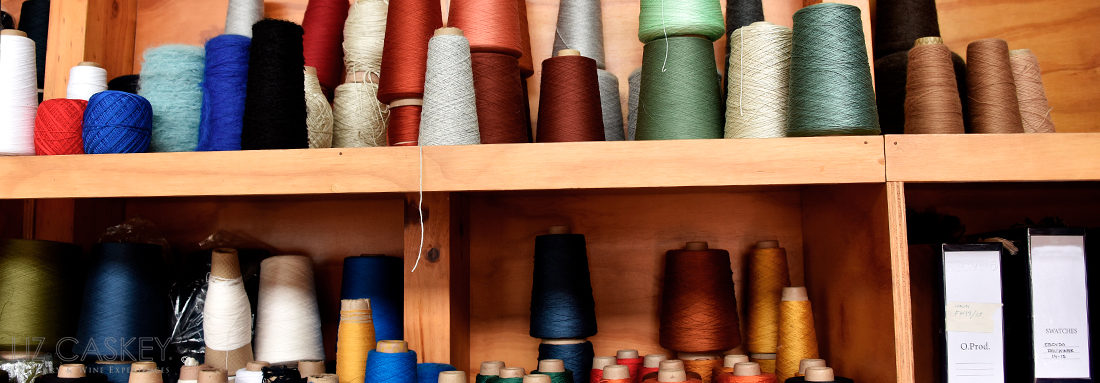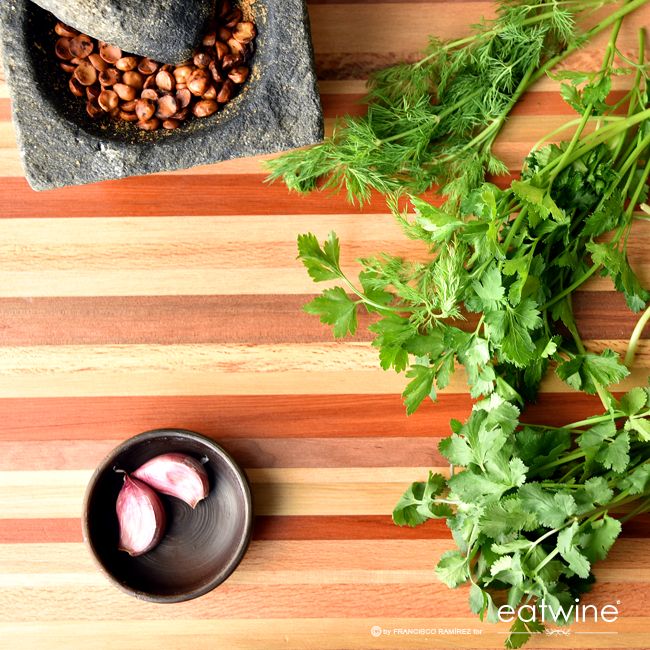
We had no longer taken off from the southern city of Puerto Montt and we were already preparing to land on the island of Chiloé, the fifth largest in South America. Twenty minutes in the air, to be exact. As the plane descended through wispy, bumpy clouds, we caught glimpses of the undulating hills covered with dense pine forests and green pastures by the sparkling sea. Chiloé may be only a ferry crossing (or now a short flight) from Chile’s southern lake district, but the archipelago is still a world away.
In fact, ask any Chilean about Chiloé and they will likely respond, “it’s magical”. This wet, emerald land cradled by the Pacific holds a special place in the country’s collective imagination, history, and cuisine. It certainly has a distinct flavor from the rest of Chile, and Chilotes still refer to mainland Chile as the “continent”.
Chiloé’s isolation creates its pristine culture, its romanticism, paired with the terrain and a rainy maritime climate. Wood and wool are used everywhere. Ferries still harbor cars, buses, and people back and forth across smaller islands and inlets. There are the rustic towns with their picturesque palafitos (houses mounted on stilts along the water’s edge), iconic wooden churches (16 of which are Unesco World Heritage sites), and homes constructed with ornate tejuelas (shaped wooden shingles). And then, there’s the cuisine. Oh, the food! Delectable tiny oysters, curanto (meat, potato and seafood stew), shellfish, salmon ceviche, one of the tastiest sheep’s milk cheese in Chile, and many creations with native potatoes. A closer look at Chilote culture also reveals a mythology of witchcraft, ghost ships and forest gnomes.

We had visited almost twenty years ago so it was high time to “rediscover” this corner of Chile. However, unlike other far-flung destinations like the Atacama Desert or Patagonia, Chiloé is certainly not an adrenaline-driven, nature-only destination. These magical islands seem to have been stopped in time, part of its allure. The islands’ natural pace also forces you to slow down. And clean air…what more can I say?
We landed on a typical Chilote, late winter day peppered with sun and rain showers. Rain, what a treat! We were so happy to see it, smell it, feel and hear it on the roof of the car and hotel. The air was heavily scented with eucalyptus, pine and that saline freshness belonging to the sea. I wished I could bottle it and take it home with me.
We based from Tierra Chiloé, the newest member of the Tierra Hotels in Chile, a petite lodge well-positioned on a bluff overlooking a quiet inlet. The hotel had floor to ceiling glass windows so we could savor the view from every angle. We lunched and decompressed in the living area and watched Mother Nature’s “show”. The sky would darken and the wind would howl. Then, it would rain like crazy for a few minutes. And, just like that, a few rays of sun would push through the clouds and a rainbow would appear. Like magic. Sometimes, we’d get just a peek of a rainbow slyly hiding across the fjord or tucked behind a hill. Another one we caught was a full glorious arch that landed near the hotel’s boat, Williche, bobbing in the waves below. In a sweet moment, seeing her first rainbow, our toddler, Micaela, reached her tiny had to the window pane trying to touch it. Rainbows are simply happiness. They are full of color, light…the magic of nature. What a divine way to return to the island.
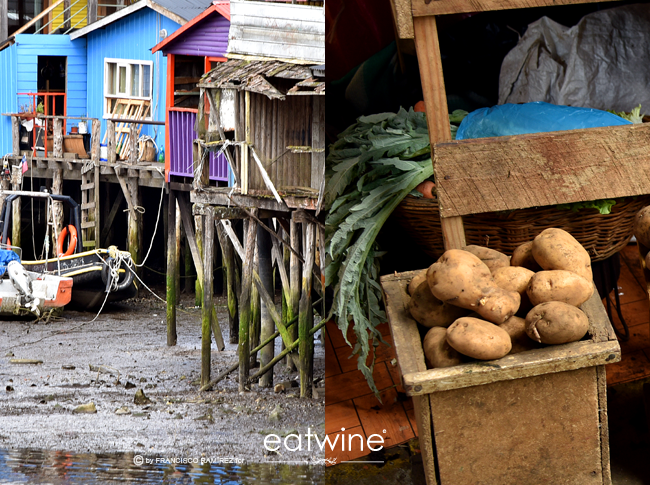
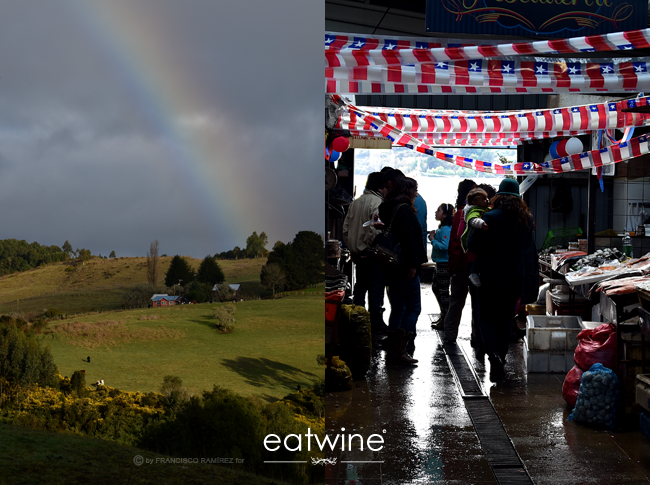
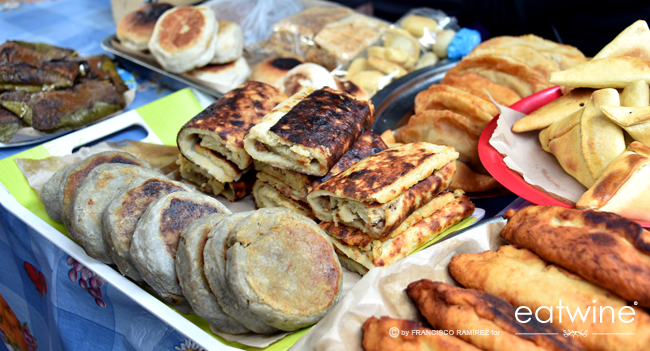
For the next few days, we explored (more posts to come on Chiloé, there was quite a lot to see, do, and eat here!). Saturday in Castro, the largest town on the island, is market day. We had to go, of course! We made our way to the Mercado along the water’s edge and wandered the stalls hawking dried luche (seaweed), smoked meats and cholgas (type of tender mussel), papas topinabor (Jerusalem artichokes), glorious bunches of chard, and then, I saw them from afar…tiny brightly colored native potatoes. I could barely contain my excitement. The casera who sold them had them baby-sized with more than half a dozen varieties, something I’d never seen in Santiago. I mentally revised how much space we had left in the carry-on. I decided I could make room to take home a couple prized kilos of these jewels to remember Chiloé in my kitchen later.
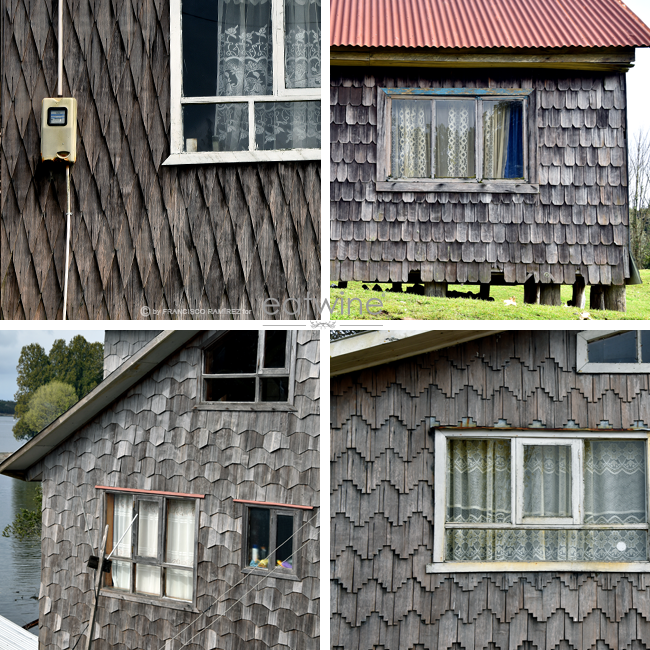
With this inspiration from the south, upon return, I decided to create this potato salad. I love potato salads, particularly the French style that are vinaigrette-based rather than with mayonnaise, which tends to be a favorite in Chile but yields a heavier result. Here, other vegetables grown on the island are incorporated such as fava beans, peas, radishes, and Chilean hazelnuts (completely unlike European ones, earthy tasting and very crunchy). Quail’s eggs are also consumed widely as an appetizer so their addition make the salad more of a main-course or hearty side salad. This recipe works beautifully with grilled salmon (prolifically farmed in the sound off the island), or of course, with any barbecued meat (which Chileans love dearly).
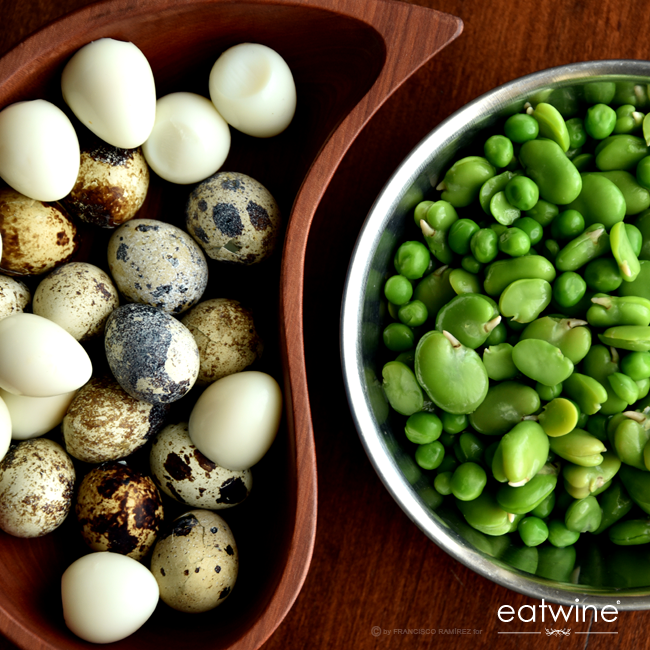
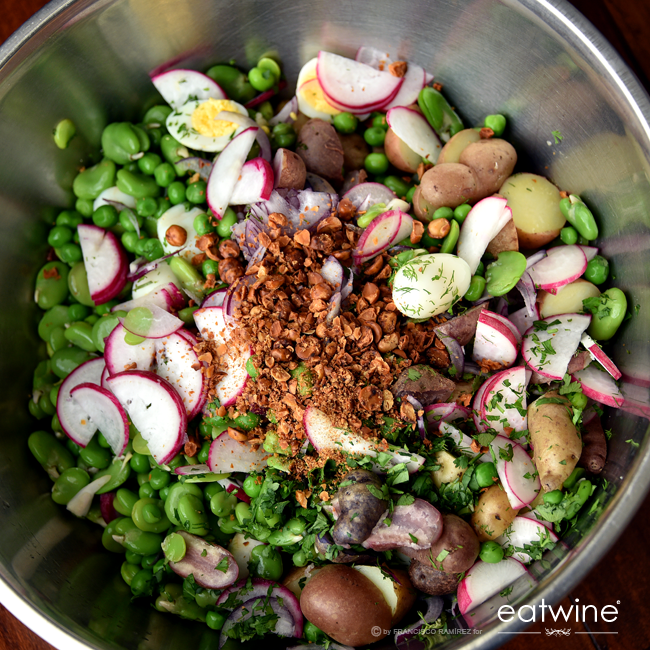
Chilote Native Potato Salad
660g / 1.5 pounds small (baby) native potatoes (substitute: fingerling potatoes)
1 cup double shelled fresh fava beans
1 cup sweet peas (fresh or frozen and defrosted)
1 medium red onion, cut paper-thin with the grain, separated
2 cloves garlic, minced
18 quail’s eggs, hard-boiled, peeled and cut in half
4 medium-sized radishes, scrubbed and cut into paper-thin half moons
2-3 tablespoons finely chopped Chilean hazelnuts (substitute: whole toasted pine nuts)
2 tablespoons minced parsley
1 tablespoon finely chopped dill
1 tablespoon finely chopped cilantro (substitute: chives if you dislike flavor of cilantro)
3 tablespoons extra virgin olive oil
1 tablespoon raw apple cider vinegar (substitute: sherry vinegar)
1 teaspoon Dijon mustard
Ground sea salt / fresh black pepper
Scrub the potatoes and dry. Place in a steamer and cook until tender and easily pierced with a knife, about 20 minutes. Let cool until they can be handled and then cut in half to form a variety of lengths and widths. Reserve.
If you using fresh fava beans, after removing from the large pod, blanch for 3-4 minutes in boiling, salted water and then refresh in ice-cold water. Peel and pop out the brilliant green fava bean. Reserve.
Place the quail’s eggs in a pot and bring to a boil. Boil for 3 minutes and then shock in cold water. Peel immediately as the delicate shell is much easier to peel when warm than after. Cut lengthwise.
For the onion, Chileans cut en pluma, which means cutting with the grain (paper-thin), and then separating with your fingers. If the onion is quite strong, many Chilean cooks “soften” the raw onion by mixing it with a sprinkle or two of sugar, and letting it rest for 15 minutes. After they rinse it with water and squeeze out the excess before adding to the salad. This takes the bite out of raw onions. Decide for yourself if you think it’s necessary, or use a shallot, instead.
Make the dressing. In a small bowl, whisk together the mustard and vinegar and slowly incorporate the olive oil in a small stream to create a creamy emulsion.
In a large bowl, combine the potatoes, fava beans, peas, onions, radishes, herbs, and hazelnuts. Fold in the dressing until lightly coated. Serve immediately. Personally, I prefer the salad at room temperature when you can fully appreciate the flavors.
6-8 servings

